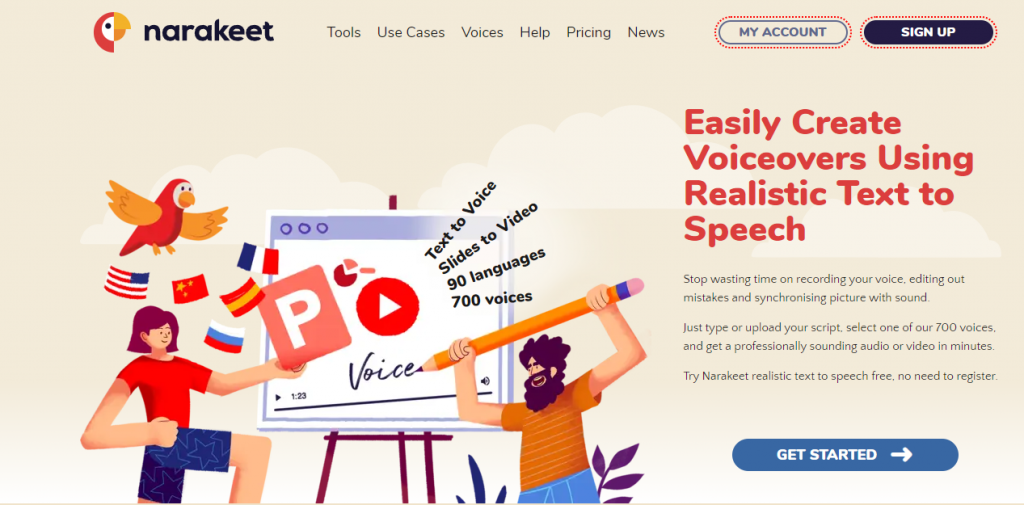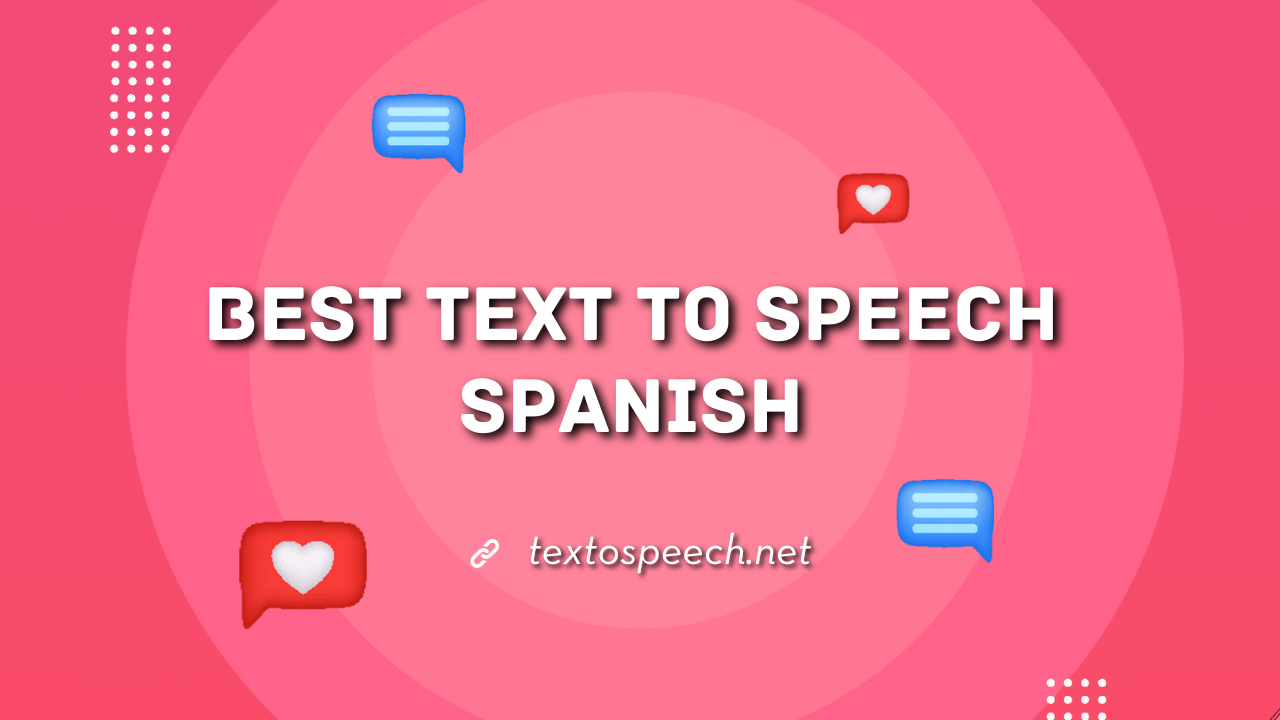Text-to-Speech (TTS) technology has revolutionized how we interact with digital content, especially in different languages like Spanish. It enables computers and devices to read aloud written text, making information accessible to a wider audience, including those with visual impairments or learning disabilities.
In this article, we will discuss the various aspects of the best Text-to-Speech options available in Spanish. We’ll explore their benefits, how they cater to different needs, and what makes them stand out.
Why Text to Speech Spanish?
Text to Speech (TTS) in Spanish is important for several reasons. First, it helps people who can’t read or see well to access written content. By turning text into speech, they can listen to books, news, and websites easily.
TTS in Spanish supports learning the language. People learning Spanish can listen to how words are pronounced. This makes it easier to understand and speak Spanish correctly.
Spanish TTS is good for businesses. Companies can reach more customers in Spanish-speaking countries. By using TTS, they can make their websites, apps, and services more accessible to a huge audience.
Top 5 Best Text to Speech Spanish
1. TextoSpeech

TextoSpeech is a website that offers a text-to-speech service, especially for Spanish language. It’s designed to be simple, helping people turn written words into spoken words. This is very useful for those who want to listen to texts instead of reading.
The service is best for Spanish text to speech. It reads Spanish texts aloud clearly and naturally. This is great for learning Spanish or for people who prefer listening. TextoSpeech is easy to use, making it friendly for everyone, even if you are not good with computers.
With TextoSpeech, you can easily convert Spanish writings into speech. This helps in many ways, like learning or for those who have trouble reading. It’s a handy tool for everyone interested in Spanish.
Features
- supports more than 300 voices and more than 50 languages, meeting a wide range of content requirements.
- offers a simple text editor with a real-time preview for voiceover adjustments.
- Options for flexible pricing include a lifetime plan, affordable subscriptions for advanced functionality, and a free edition.
- voices with a natural sound that is perfect for multimedia projects and YouTube videos.
- web-based platform, which eliminates the need to install software and guarantees accessibility and convenience.
- Quick processing times enable voiceover jobs to be completed more quickly, which boosts output.
Pros And Cons
Pros
- Variety of Voices and Languages
- Ease of Use
- Time-Saving
- Cost-Effective
- Consistency
- Accessibility
Cons
- Limited Features in Free Version
- Lack of offline functionality
2. Narakeet

Narakeet is a website that helps you change written words into spoken words, like a robot reading out loud. It’s especially good for Spanish. This is useful for making videos or audio in Spanish without needing a real person to speak.
The site is easy to use. You type in what you want to say, and it makes it sound like someone is speaking in Spanish. It’s great for people who are learning Spanish or making projects in Spanish.
Narakeet is helpful because you don’t need to speak Spanish well to use it. It makes your words sound natural, like a real Spanish speaker. This is good for making your work sound professional.
Features
- Offers over 700 voices across 90 languages, catering to a global audience and diverse content needs.
- Includes background music options, sound effects, and the ability to adjust speech speed and pitch for customized voiceovers.
- Easy-to-use script editor and the ability to convert PowerPoint presentations directly into narrated videos.
- Flexible pricing plans, including pay-as-you-go and subscription options, are suitable for various user needs and budgets.
- High-quality, natural-sounding voices enhance the overall audio experience of your content.
- Easily integrates with various content creation workflows, streamlining the process of adding voiceovers to videos and presentations.
- Wide accessibility with support for multiple languages and dialects, making it ideal for creating content for international audiences.
Pros and Cons
Pros
- Variety of Voices and Languages
- Ease of Use
- Time-Saving
- Cost-Effective
- Consistency
- Accessibility
Cons
- Limited Features in Free Version
- Lack of offline functionality
3. Murf.ai

Murf.ai is a website that offers text-to-speech services. This means it can turn written words into spoken words. It supports many languages, including english, Hindi, Tamil and Spanish. The website is useful for people who need to hear text read aloud in different languages.
For Spanish, Murf.ai is especially good. It helps users hear how Spanish text sounds when spoken. This is great for learning Spanish or for making videos and presentations in Spanish. The website is easy to use and works well for different purposes.
Features
- Murf AI offers over 120 voices across 20 different languages, catering to a global user base.
- Includes voice cloning, AI dubbing, and integration with Canva for enhanced voice-over capabilities.
- Advanced text-to-speech editor, voice modulation options, and real-time voice editing for precise control.
- Flexible pricing plans, including a free trial, basic, pro, and enterprise levels, to suit different user needs.
- High-quality, lifelike AI voices are ideal for professional and personal projects.
- User-friendly interface, making it accessible for beginners and experts alike.
- Extensive library of AI voices, including options for different ages, accents, and styles.
Pros and cons
Pros
- Wide variety of voices
- Extra Effects
- Google Slides Add-on
Performance - Scalability
Cons
- Cost
Learning Curve - Reliability
- Customization
4. PlayHT

PlayHT is a website that offers text-to-speech services. It’s great for turning written Spanish into spoken words. This is helpful for those who prefer listening over reading.
The site is known for having the best text-to-speech for Spanish. It makes clear and natural-sounding voices. This is perfect for anyone who needs to hear Spanish text read aloud.
Using PlayHT is easy. You just type or paste Spanish text, and it reads it back to you. This tool is ideal for learning Spanish or for times when you can’t read text yourself.
Features
- Offers over 900 AI voices across 100+ languages, catering to a global audience.
- Includes SSML tags for voice control, WordPress plugin, and podcast hosting integration.
- Real-time voice preview to ensure quality before finalizing the audio.
- Flexible pricing plans, including a free version and affordable premium options.
- High-quality voice cloning technology for personalized voiceovers.
- Easy-to-use interface for quick text-to-speech conversion.
- Advanced customization options, including speed, pitch, and emphasis adjustments.
Pros and Cons
Pros
- Wide Range of Voices and Languages
- Realistic Voice Synthesis
- Easy to Use
- Customization Options
- Integration Capabilities
Cons
- Dependence on Text Quality
- Lack of Emotional Depth
- Cost
- Limited Customization in Free Version
5. Speechify

Speechify is a tool that turns written words into spoken words. It’s great for people who like to listen more than read. It has a feature for Spanish, making it easy for Spanish speakers to use.
The Spanish text-to-speech feature of Speechify is helpful. It reads Spanish text out loud. This is good for learning Spanish or for those who prefer listening.
This tool is simple to use. You just put text in, and it reads it out loud in Spanish. It’s a good way for everyone to understand Spanish text better.
Features
- Speechify offers over 30 languages and a wide range of 130+ voices, including natural-sounding and celebrity-like options.
- Includes reading speed control, highlighting text as it’s read, and converting text from books, PDFs, and web pages.
- Integrates with browsers and mobile devices, allowing seamless text-to-speech conversion across different platforms.
- Offers a free version with basic features and a premium plan with advanced capabilities like more voices and offline listening.
- High-quality voice synthesis, providing clear and natural-sounding audio for various content types.
- User-friendly interface, making it easy for users of all skill levels to navigate and use the tool effectively.
- Multi-device compatibility, supporting usage across computers, smartphones, and tablets for consistent accessibility.
Pros and Cons
Pros
- Accessibility
- Language Learning
- Productivity
- OCR technology
- Support for Multiple Platforms
Cons
- Naturalness of Voice
- Accuracy and Pronunciation
- Subscription Costs
- Limited Context Understanding
Conclusion
The best text-to-speech tools for Spanish stand out for their clear voices and accurate pronunciation. They help users understand and speak Spanish better.
These tools are great for learning, making life easier for those who need speech assistance. Remember, the right tool can make a big difference in language learning and communication.

